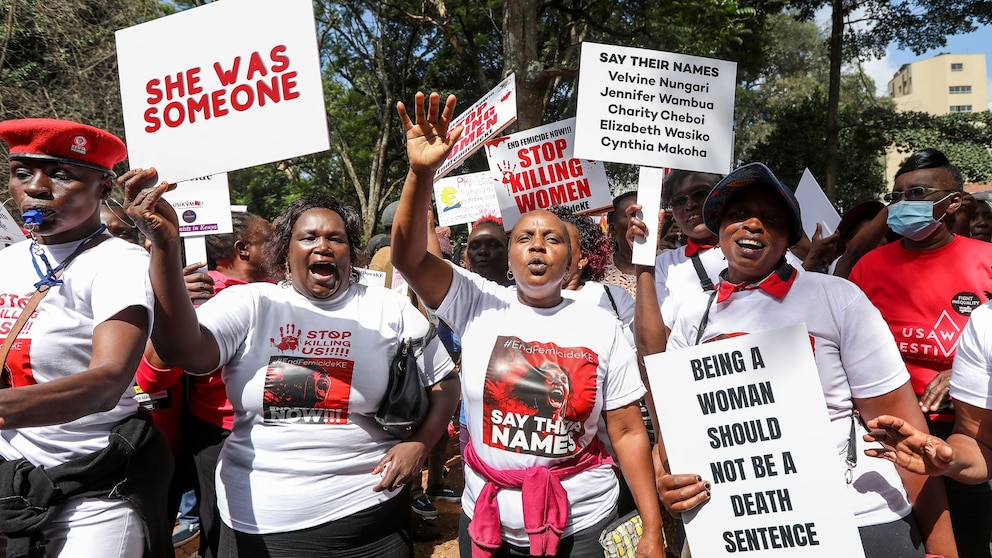Femicide: Understanding The Rise In Incidents

Table of Contents
Defining Femicide and its Distinguishing Features
Femicide isn't simply the killing of a woman; it's about the gendered context and motivations behind the act. It encompasses crimes motivated by hatred, control, or punishment specifically because of the victim's gender. This distinguishes it from other forms of homicide.
Differentiating Femicide from other forms of homicide:
- Focus on gendered motivations: The perpetrator's actions are driven by misogyny, a desire to control or punish women, or rooted in patriarchal beliefs that devalue women's lives.
- Often involves intimate partners or family members: A significant portion of femicides are committed by current or former intimate partners, highlighting the devastating role of intimate partner violence and domestic violence.
- Patterns of abuse frequently precede femicide: Femicide is often the tragic culmination of a pattern of abuse, control, and escalating violence against the victim. Recognizing these warning signs is crucial for prevention.
- May involve sexual violence or degradation: Sexual assault and degradation are frequently intertwined with femicide, underscoring the misogynistic nature of these crimes.
- Frequently overlooked or misclassified as other crimes: The gendered nature of femicide is often overlooked, leading to underreporting and misclassification of these crimes as something less serious. This necessitates improved training and awareness among law enforcement.
Keywords: Gendered Violence, Intimate Partner Femicide, Familicide, Honor Killings, Domestic Homicide
The Complex Web of Contributing Factors
Multiple interwoven factors contribute to the alarming rise in femicide rates globally. Understanding these complexities is paramount to developing effective strategies for prevention.
Societal and Cultural Norms:
Deep-rooted patriarchal norms and gender inequalities create an environment where violence against women is tolerated, normalized, or even excused.
- Gender stereotypes and roles: Traditional gender roles often place women in subordinate positions, perpetuating power imbalances that can lead to violence.
- Acceptance of male dominance and control: Societal acceptance of male dominance and control over women creates a climate where violence is seen as acceptable or even justifiable.
- Lack of legal protection for women: Inadequate legal frameworks and enforcement often fail to protect women from violence and hold perpetrators accountable.
- Societal tolerance of violence: A culture that tolerates or minimizes violence in general creates an environment conducive to gender-based violence, including femicide.
- Cultural beliefs that justify violence against women: Certain cultural beliefs and practices normalize or justify violence against women, making them more vulnerable to femicide.
Keywords: Patriarchy, Gender Inequality, Misogyny, Gender-Based Violence, Cultural Norms, Social Inequality, Honor Killings
Economic Factors and Power Dynamics:
Economic dependence and power imbalances significantly increase women's vulnerability to violence, making it harder to escape abusive situations.
- Economic vulnerability and poverty: Poverty and economic hardship can trap women in abusive relationships, as they may lack the resources to leave.
- Lack of economic independence for women: Financial dependence on a partner can make women particularly vulnerable to control and violence.
- Power imbalances in relationships: Unequal power dynamics within relationships create an environment where one partner can exert control and violence over the other.
- Control over resources as a factor in violence: Controlling access to finances, housing, or other resources can be a tool used to maintain power and control, increasing the risk of femicide.
Keywords: Economic Inequality, Poverty, Power Dynamics, Financial Dependence, Economic Empowerment
The Role of Weapons Availability:
Easy access to weapons, particularly firearms, dramatically increases the lethality of domestic violence and contributes to higher femicide rates.
- Increased availability of firearms: Greater access to firearms increases the likelihood that domestic disputes will escalate to deadly violence.
- Stricter gun control as a potential preventative measure: Research suggests that stricter gun control measures could potentially reduce femicide rates.
- Correlation between weapon availability and femicide rates: Studies have shown a correlation between the availability of weapons and higher rates of femicide.
Keywords: Gun Violence, Firearms, Weapon Availability, Gun Control, Weapon Legislation
The Impact of Femicide and its Consequences
Femicide has far-reaching consequences, causing profound and lasting harm to individuals, families, and communities.
Effects on Families and Communities:
The devastating impact of femicide extends far beyond the immediate victim, creating a ripple effect of trauma and instability.
- Emotional trauma for family and friends: The loss of a loved one to femicide causes immense grief, trauma, and long-term psychological distress for family and friends.
- Financial hardship for families: The loss of income and increased funeral and legal costs can lead to significant financial hardship for families.
- Loss of community members and social disruption: The loss of a woman to femicide can disrupt the social fabric of a community, leaving behind a sense of insecurity and fear.
- Intergenerational trauma: The trauma experienced by families can be passed down through generations, leading to lasting psychological impacts.
Keywords: Trauma, Grief, Community Impact, Family Violence, Post-Traumatic Stress Disorder (PTSD)
The Public Health Crisis:
Femicide is recognized as a significant public health crisis requiring a comprehensive, multi-faceted approach to prevention and intervention.
- The significant impact on public health: The physical and mental health consequences of femicide extend far beyond individual victims, impacting entire communities and generations.
- The need for preventative strategies: Effective prevention requires a holistic strategy that addresses societal norms, economic inequalities, and access to support services.
- Improved data collection and reporting: Accurate data collection and reporting are essential to understanding the scope of the problem and evaluating the effectiveness of interventions.
Keywords: Public Health Crisis, Prevention Strategies, Data Collection, Intervention Programs
Conclusion
The alarming rise in femicide demands a collective and concerted effort to address this global crisis. Understanding the contributing factors—from deeply ingrained societal norms to economic inequalities and access to weapons—is crucial to developing effective prevention measures. We must promote gender equality, challenge patriarchal structures, improve access to support services for victims, and strengthen legal protections for women. By working together, we can create safer communities and strive to end femicide, ensuring a world free from violence against women. Let's work together to address the devastating issue of femicide and create a world free from violence against women.

Featured Posts
-
 Improved Customer Service At Hmrc Through Voice Recognition
May 20, 2025
Improved Customer Service At Hmrc Through Voice Recognition
May 20, 2025 -
 David Walliams Departure From Britains Got Talent What We Know
May 20, 2025
David Walliams Departure From Britains Got Talent What We Know
May 20, 2025 -
 Biarritz Le Bo Cafe Retrouve Une Nouvelle Dynamique Grace A Ses Nouveaux Exploitants
May 20, 2025
Biarritz Le Bo Cafe Retrouve Une Nouvelle Dynamique Grace A Ses Nouveaux Exploitants
May 20, 2025 -
 Find The Nyt Mini Crossword Answers For March 18
May 20, 2025
Find The Nyt Mini Crossword Answers For March 18
May 20, 2025 -
 Significant Ai Policy Shift Under Trump What It Means For The Industry
May 20, 2025
Significant Ai Policy Shift Under Trump What It Means For The Industry
May 20, 2025
